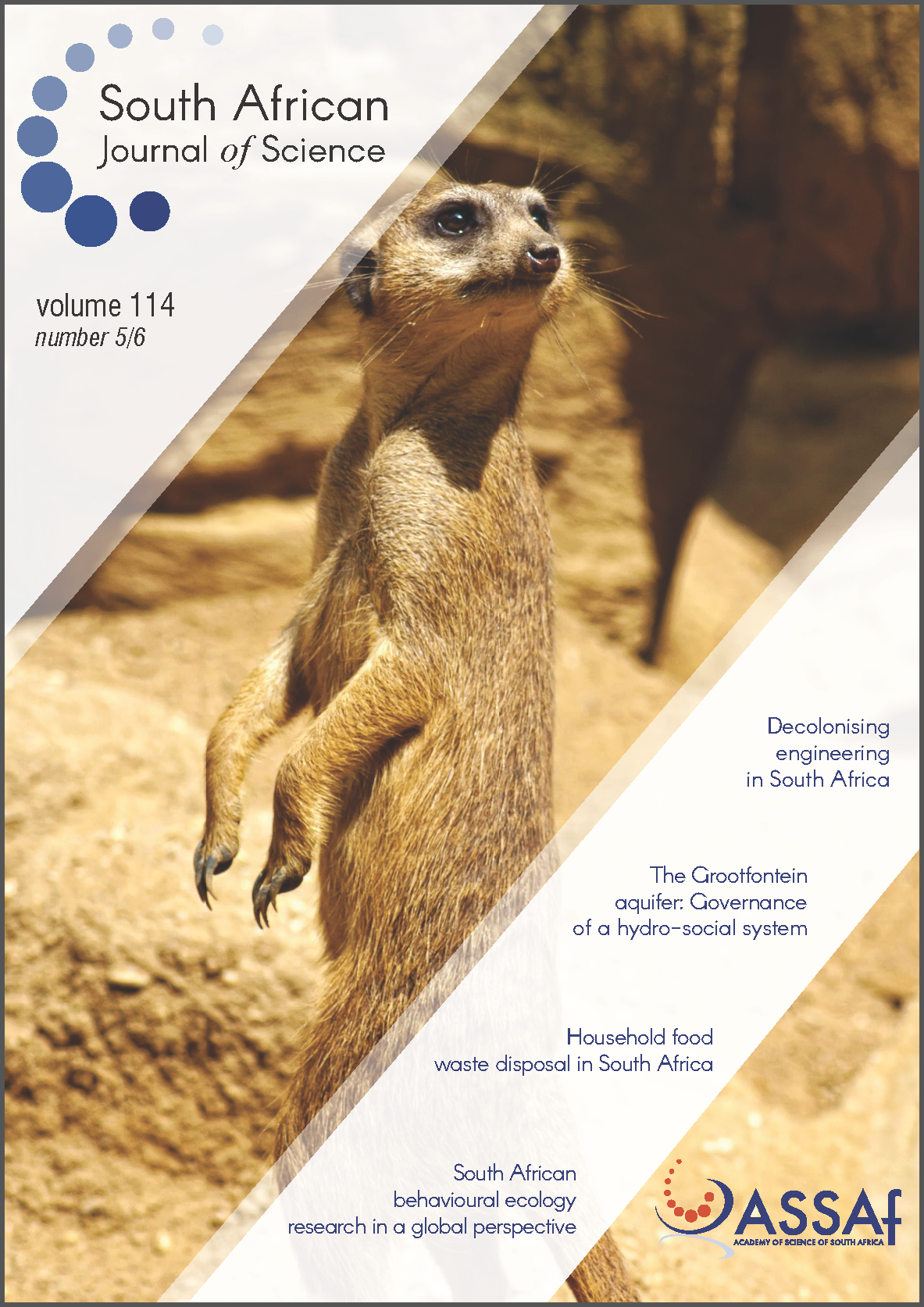Farmer groups and inorganic fertiliser use among smallholders in rural South Africa
DOI:
https://doi.org/10.17159/sajs.2018/20170083Keywords:
collective action, smallholder farming, propensity score matching, technology adoption, KwaZulu-NatalAbstract
Smallholder farmers in developing countries are characterised by low uptake of improved farm inputs and weak links to markets. Among other reasons, the high transaction costs that these smallholder farmers incur, as a result of their location in remote areas, inadequate information and missing credit markets, inhibit them from participating in both input and output markets. Organising farmers into groups has been suggested as a potential mechanism for reducing transaction costs. Accordingly, farmer groups have been preferred channels for smallholder farmer support in South Africa, both by the government and donors. However, the impact of these groups on smallholder outcomes such as technology adoption is largely unknown. We investigated the extent to which membership in farmer groups influences the use of improved farm inputs such as inorganic fertiliser among smallholder farmers in South Africa. A sample of 984 households was analysed using the propensity score matching method. Group membership was found to play a positive role in inorganic fertiliser use with a 14% higher chance of inorganic fertiliser use among group members. Among fertiliser users, group members used 170 kg more inorganic fertiliser than did non-members. Further analysis indicated that the effect of group membership on inorganic fertiliser use was heterogeneous among group members. The results suggest that farmer groups play a positive role in the use of improved farm inputs in South Africa. For greater effectiveness of group membership, policymakers should target the less educated, increase the assets of the poor and improve access to extension and information.
Significance:
- The impact of farmer groups on smallholder outcomes such as technology adoption is largely unknown.
- Farmer groups were found to play a positive role in the adoption of agricultural technologies such as inorganic fertilisers.
- Effect of group membership on inorganic fertiliser adoption was heterogeneous among group members.
- Variables that should be targeted for greater effectiveness of collective action were identified.
Published
Issue
Section
License

All articles are published under a Creative Commons Attribution 4.0 International Licence
Copyright is retained by the authors. Readers are welcome to reproduce, share and adapt the content without permission provided the source is attributed.
Disclaimer: The publisher and editors accept no responsibility for statements made by the authors
How to Cite
- Abstract 1841
- PDF 1622
- EPUB 250
- XML 322












.png)